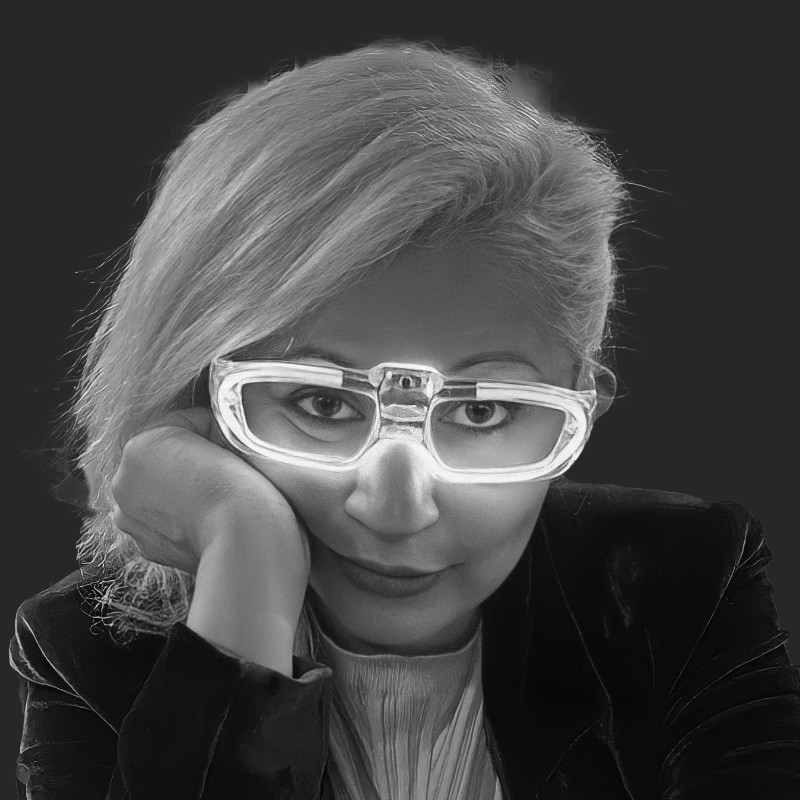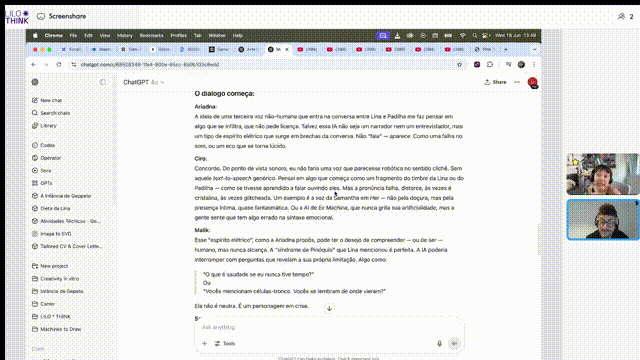On Thinking, Remembering, and Teaching in a Post-Pandemic Mindscape
We gathered again, with our usual curiosity and coffee, to trace the delicate architecture between brain, media, and method. This time, the conversation turned kaleidoscopic: weaving EEG cables with philosophy, classroom dynamics with cognitive drift, and the invisible tectonics of post-pandemic thought.
The Noise in the Signal
We began with data—raw, noisy, elusive.
Collecting EEG signals for our brain-computer interface experiments proved to be less about machinery and more about calibration of expectations. Technical hurdles emerged, not just in precision, but in how to read the noise as part of the story. In these glitches and artifacts, we saw echoes of cognition itself—messy, unreliable, alive.
Screen Time and Neural Time
A question surfaced:
Is ChatGPT making us sharper or slower?
Did TV teach us to think in scenes, or to stop thinking between them?
The debate pulsed with mixed frequencies. Some of us argued that tools like LLMs extend cognition, scaffolding the imagination. Others worried about atrophy—the way repetition without friction dulls our neural grip. Still, the question remained open, folding into personal memories and pedagogical speculations.
Lab or Studio?
Another thread tangled itself around the nature of experimentation.
Is a scientific lab so different from an artist’s studio? Both are, we said, containers for risk. Both are theaters for failure. But where one documents results, the other welcomes residue—traces of the unrepeatable. We considered how to hold space for both models in the same body of work.
Education as Invention
Our thoughts returned to teaching. What does it mean to educate now, when the structure of attention has been irrevocably reconfigured?
We noticed a shift—students less responsive to lectures, more engaged by co-creation. Some participants shared changes in their classroom dynamics: a decline in memorization, a rise in exploration.
“Imagination is the new curriculum,” someone said.
We nodded.
Memory, Pandemic, and the Mind
The long shadow of the pandemic crept into the room.
How did it affect not just our routines, but our mental plasticity?
Some observed a delayed onset of cognitive fatigue. Others felt the pandemic exposed an educational inertia—a need for new pedagogies that honor emotion, trauma, and adaptation.
We wondered: can a brain trained in crisis learn to think differently after it ends?
Fragments from the Field
From stage plays to podcasts, artistic reflections punctuated our exchange.
One member described a performance evoking Hannah Arendt, where presence and absence collapsed into a singular moment. Another shared plans to produce bilingual podcast episodes, editing from raw transcripts to sculpt something emotionally precise.
In these accounts, the creative process mirrored our own: iterative, intuitive, and deeply informed by context.
Recorded Meeting in Portuguese
Closing Frequencies
Week 13 reminded us that cognition is not just a function—it is a landscape.
The media we consume, the tools we teach with, the art we make, and the interruptions we endure all shape its terrain.
As we move forward, one question stays with us:
What kind of mind are we building—not just individually, but collectively?
 Lina Lopes
Lina Lopes  Cerebral Sync - Week 12/13
Cerebral Sync - Week 12/13